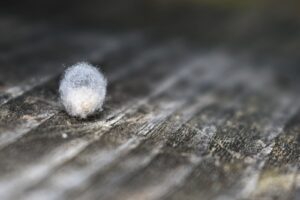Home / Blog / Spiders / What You Need To Know About House Spiders
What You Need To Know About House Spiders

Scientifically reviewed by Daniel Baldwin, BCE, CCFS, CP-FS
-Published on July 19, 2021
-Updated on July 13, 2023
House spiders are common throughout the U.S., so you’re likely to find them in places like your garage, basement, and other parts of your home. In this post, we’ll review answers to frequently asked questions about house spiders and explore the characteristics of some species.
What are spiders?
Spiders are eight-legged creatures that belong to the arachnid family. Although their appearances and habits vary, spiders are all predators, meaning they eat other insects.

Are house spiders good?
Spiders play an important role in all ecosystems where they’re present by helping to control the population levels of other insects. Common house spiders can eat pests like mosquitoes, flies, earwigs, and cockroaches. So technically, even if homeowners have an aversion to spiders, they can actually be a good presence in certain instances.
However, some species can bite and should be removed to ensure the safety of people and pets in your home, and of course, some homeowners may simply feel uneasy about having them in their homes.
What do spiders eat?
Common house spiders typically eat other insects. Larger spiders may eat other things like worms and snails.
Do house spiders bite?
Common house spiders are too small to cause any damage or pain if they do. Some people may develop allergic reactions to spider bites and experience swelling and itching.
Are house spiders dangerous?
Whether house spiders are dangerous depends on the species and the people living in your home. Non-venomous spiders aren’t dangerous unless you have a severe allergy.
Common types of house spiders
There are more than 46,000 species of spiders in the world, many of which are commonly found in the U.S.
Here are some of the most common types of house spiders:
- American house spiders: These spiders are usually around the size of a nickel and are tan, brown, or gray with dark brown patterning. American house spiders aren’t poisonous.
- Long-bodied cellar spiders: Also called daddy-long-legs, these spiders have small round bodies and very long, skinny legs. Like American house spiders, they’re not poisonous.
- Brown recluse spiders: Found in 15 states, brown recluses are venomous spiders around one-third of an inch long and have brown or gray oval-shaped bodies with a violin-shaped marking on their back.
- Sac spiders: Sac spiders are light yellow or beige and have oval bodies that are around one-half inch long. Their bites aren’t deadly, but they can trigger allergic reactions.
- Jumping spiders: Measuring around one inch in length, jumping spiders are bigger than many other house spiders. They are usually hairy and have mottled or two-toned gray, beige, tan, or black bodies. This species will bite if threatened; however, the bites typically aren’t serious unless you are allergic.
- Hobo spiders: Sometimes called funnel weavers, these spiders are tan or brown and lack any markings. They are usually around half an inch long. Hobo spiders are more aggressive than other breeds, but their bites usually cause minor irritation unless the person is allergic to them.

How do I know I have spiders in my house?
You’ll know you have spiders in your house if you find their webs or observe the spiders moving. The number of spiders living in a home depends on its size, location, and other factors. The average home may host anywhere from 0 to up to 30 species of spiders.
Do house spiders make webs?
Many common house spiders make webs, including American house spiders, daddy long-legs, brown recluses, jumping spiders, and hobo spiders. Wolf spiders burrow rather than make webs and are not likely to be found in your home. Some sac spiders make webs, while others don’t.
Where do house spiders live in the house?
Spiders can live anywhere in your home, from the kitchen to your bedroom. However, spiders are more likely to live in cool, dark places like basements and crawl spaces. You can also commonly find them in attics.
How do house spiders get in?
A spider can get into your home in many ways. They might sneak in through open windows or doors or take advantage of gaps, cracks, and spaces in your home’s structure. In some cases, they can be carried inside on pets or on items you’ve brought in from areas like storage spaces.
Pest control services
Hawx Pest Control offers a wide selection of spider-related services, including prevention measures that reduce the risk of them entering your home in the first place. We know the inside of your home is the last place you want to see a spider, so we protect it with an effective perimeter and ongoing treatments. For more information on our pest control services and how we can assist you, contact our team online or call us at (888) 372-9514.
Related Articles
Visit our blog to learn more.
→





